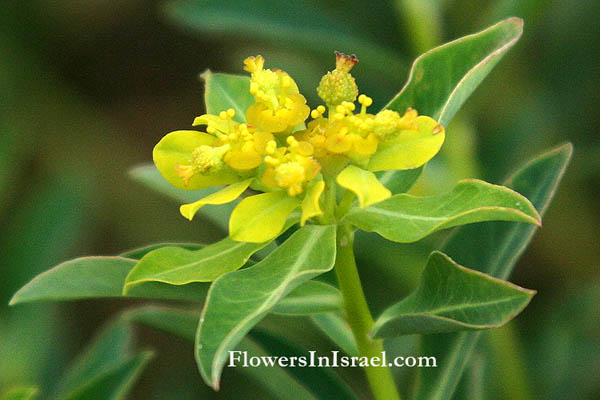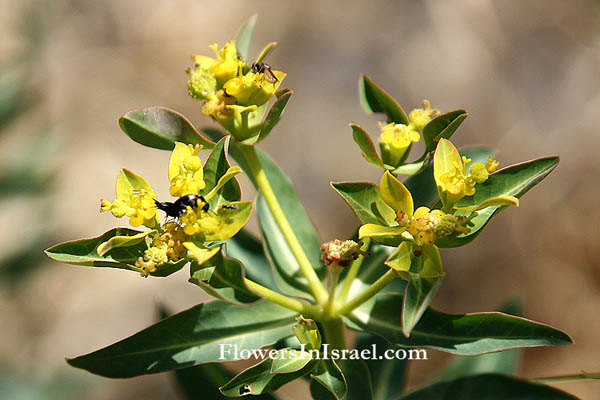חלבלוב קוצני
| Scientific name: | Euphorbia erinacea Boiss. & Kotschy | |
| Common name: | Spiny spurge | |
| Hebrew name: | חלבלוב קוצני | |
| Plant Family: | Euphorbiaceae, חלבלוביים |

|
| Life form: | Chamaephyte, semi-shrub | |
| Stems: | branches, acute and so intricate spines; bark, smooth, yellowish-brown | |
| Leaves: | Alternate, entire, glabrous | |
| Inflorescence: | Cyathium | |
| Flowers: | Green | |
| Fruits / pods: | Capsules warty; caruncles less than 0.5 mm long | |
| Flowering Period: | April, May, June, July | |
| Habitat: | Tragacanth shrub vegetation | |
| Distribution: | Montane vegetation of Mt. Hermon | |
| Chorotype: | Oro Mediterranean | |
| Summer shedding: | Perennating |

Derivation of the botanical name: Euphorbia, Εὔφορβος, Euphorbus, after the Numidian physician Euphorbus, physician to Juba II, King of Numidia and Mauretania, about the end of the first century BCE. erinacea, resembling a hedgehog. spurge from the Old French word espurgier (Latin expurgare), which means "to purge." The sap of many herbaceous Euphorbia species have traditionally been used as a purgative, or laxative.

|